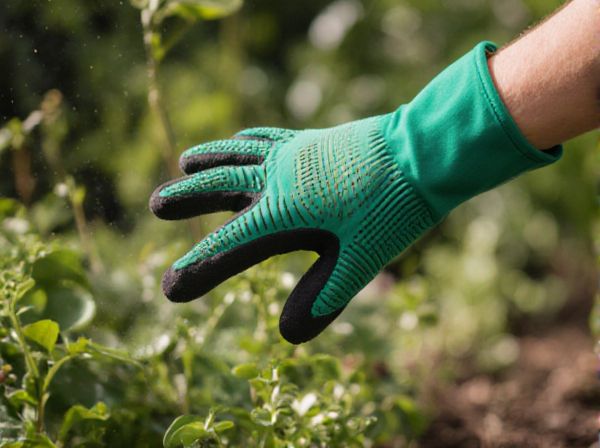
Crown reduction vs topping Illustration
Crown reduction involves selectively cutting back the branches to lateral growth points, preserving the tree's natural shape and health, while topping indiscriminately removes the upper portions, often leading to weak regrowth and increased vulnerability to diseases. Crown reduction promotes structural integrity and long-term vitality, whereas topping can cause stress, dieback, and unsightly appearance. Proper pruning through crown reduction supports sustainable tree growth and reduces the risk of safety hazards caused by weakly attached shoots.
Table of Comparison
| Aspect | Crown Reduction | Topping |
|---|---|---|
| Definition | Selective pruning to reduce tree size while maintaining structure. | Severe cutting of main branches to stubs or trunks. |
| Purpose | Control size, improve tree health, increase light penetration. | Rapid size reduction, often for clearance or aesthetics. |
| Growth Impact | Promotes healthy, natural regrowth. | Leads to weak, abnormal regrowth prone to disease. |
| Tree Health | Maintains tree vitality. | Damages tree, increasing stress and decay risk. |
| Appearance | Preserves natural shape. | Creates unsightly, unnatural form. |
| Long-Term Effects | Supports longevity and stability. | Reduces lifespan, can cause structural failure. |
| Recommended Use | Professional tree care and management. | Generally discouraged by arborists. |
Understanding Crown Reduction and Topping
Crown reduction involves selectively cutting back branches to reduce tree size while maintaining the natural shape and health of the tree, promoting proper growth and structural integrity. Topping, in contrast, is the drastic removal of large branches or the entire top of a tree, often leading to weak regrowth, increased vulnerability to diseases, and long-term damage. Understanding the differences highlights crown reduction as a safer, more sustainable pruning method, whereas topping is generally discouraged by arborists due to its detrimental effects.
Key Differences Between Crown Reduction and Topping
Crown reduction involves selectively shortening branches to maintain a tree's natural shape and health, promoting proper growth and minimizing stress, whereas topping indiscriminately cuts the tree's crown, often leading to weak regrowth and increased vulnerability to disease. Crown reduction preserves the branch structure and encourages strong, healthy limb development, while topping removes major limbs, causing rapid, weak shoots that compromise the tree's structural integrity. Key differences include the impact on tree vitality, aesthetic outcomes, and long-term health, with crown reduction being the preferred method for sustainable tree management.
Benefits of Crown Reduction in Tree Care
Crown reduction enhances tree health by selectively removing branches to reduce canopy size without compromising structural integrity, promoting balanced growth and reducing storm damage risk. This method preserves the tree's natural shape and improves light penetration, encouraging photosynthesis and overall vitality. Unlike topping, crown reduction minimizes stress and prevents decay, supporting long-term stability and aesthetic appeal in urban and residential landscapes.
Dangers and Risks of Tree Topping
Tree topping poses significant risks including structural weakness, increased susceptibility to disease, and rapid, weak regrowth that often leads to dead limbs falling. Crown reduction, performed correctly, maintains tree health by selectively removing branches to reduce size without compromising structural integrity. Ignoring the dangers of tree topping can result in costly damage and shorten the tree's lifespan.
Impact on Tree Health: Crown Reduction vs Topping
Crown reduction preserves the tree's natural structure by selectively shortening branches, which maintains photosynthesis and reduces stress, promoting long-term health. Topping involves indiscriminate cutting of large branches, leading to weak regrowth, increased vulnerability to pests, diseases, and structural failure. Proper crown reduction enhances tree vitality and resilience, while topping often results in declining health and potential tree death.
Proper Pruning Techniques for Healthy Trees
Crown reduction involves selectively shortening branches to maintain the tree's natural shape, promoting balanced growth and structural integrity. Topping, which removes large portions of the canopy indiscriminately, often leads to weak regrowth, increased vulnerability to disease, and long-term damage. Employing proper pruning techniques, such as crown reduction, supports healthy trees by enhancing airflow, light penetration, and overall tree vitality.
Long-Term Effects on Tree Structure
Crown reduction maintains the tree's natural shape by selectively shortening branches, promoting healthy growth and structural stability over time. Topping involves cutting branches indiscriminately at uniform heights, often leading to weak, fast-growing shoots prone to disease and decay. Long-term, crown reduction supports a balanced canopy and reduces risk of structural failure, while topping compromises tree vitality and increases maintenance needs.
Aesthetic Outcomes: Shaping Your Trees
Crown reduction preserves the tree's natural form by selectively shortening branches, resulting in a balanced and aesthetically pleasing shape. Topping removes large sections indiscriminately, often causing unsightly stubs and weak regrowth that diminishes the tree's appearance. Opting for crown reduction enhances visual harmony and supports long-term tree health compared to the harsh impact of topping.
Choosing the Right Pruning Method
Crown reduction preserves tree health by selectively cutting branches back to lateral limbs, maintaining natural shape and structural integrity, unlike topping which indiscriminately removes large branch sections and often leads to decay and weak regrowth. Selecting crown reduction supports long-term tree vitality and reduces risk of disease, while topping can cause stress and increase maintenance costs. Arborists recommend crown reduction as the safer, more sustainable pruning method for managing tree size and shape.
Expert Tips for Safe and Effective Pruning
Crown reduction involves selectively cutting branch tips to decrease tree height and spread while maintaining its natural shape and structural integrity, unlike topping which removes entire limbs and can cause weak regrowth and decay. Experts recommend crown reduction for safety and tree health, emphasizing clean cuts at branch collars and preventing over-pruning that stresses the tree. Using proper tools, understanding species-specific growth patterns, and scheduling pruning during dormant seasons ensure effective crown reduction and long-term tree vitality.
Crown reduction vs topping Infographic

 gardendif.com
gardendif.com